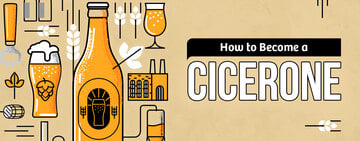A barback is an important supporting role responsible for some behind-the-scenes operations that allow a bar to function smoothly and profitably. Serving as the bartender's "right hand", this position is the backbone of an efficient service well, handling everything from restocking ice and glassware to preparing bar garnishes and changing kegs. A skilled barback accelerates service, controls inventory costs, and enhances the overall customer experience. This foundational role is also a proven training ground, serving as a fantastic pathway for those looking to build a career in bartending and bar management.
What Does a Barback Do?

A barback’s function is to support bartenders, ensuring they can remain at their stations and focus entirely on crafting drinks and engaging guests. This role is a blend of anticipation and organization, directly impacting the speed and quality of service. From the pre-opening setup to the final wipe-down after last call, the barback’s primary duties are to maintain the bar's operational flow and cleanliness standards. Their work, though often unseen by customers, prevents slowdowns and keeps revenue flowing during peak hours.
- Manage Inventory and Stock: The barback receives, organizes, and rotates bar inventory, from liquor and beer to non-alcoholic supplies, verifying everything is fully stocked and accessible before and during service.
- Prepare Garnishes and Mixes: Before opening, a barback prepares fresh garnishes like citrus wedges and cocktail cherries, as well as simple syrups and other pre-mixed ingredients essential for efficient drink building.
- Ready Glassware and Tools: A barback stocks well stations with clean glassware and checks that bartenders have immediate access to essential bartending tools like shakers, jiggers, and stirring spoons throughout their shift.
- Maintain Bar Sanitation: The barback clears used glassware, wipes down surfaces, and promptly addresses spills to uphold health code standards and provide a clean environment for both staff and customers.
- Support Draft and Bottle Service: An establishment's barback monitors keg levels and replaces the kegs as needed. They are also responsible for quickly retrieving backstocked bottles from coolers to keep popular drinks flowing without interruption.
- Execute Opening and Closing Duties: A barback must complete important tasks such as setting up the bar for success before doors open and breaking it down at night by deep-cleaning equipment, taking out trash, and restocking for the next day's service.
Barback Job Description
An effective barback job description should outline the role's physical demands and support function, moving beyond a simple task list. It must specify essential requirements such as the ability to lift heavy kegs, withstand long hours on your feet, and maintain a clean, organized workspace under pressure.
For applicants, a quality posting will also indicate the type of establishment, such as a high-volume nightclub versus a craft cocktail bar, as this drastically alters the daily pace and required skills. Look for mention of a defined tip-out structure and any potential for advancement, as these signal an establishment that values the role as a vital part of the team and a genuine career stepping-stone.
Barback Salary
A barback's income is typically comprised of an hourly base wage plus a share of the bartenders' tips, known as a "tip-out." The specific hourly rate can vary by state and local laws, especially for tipped employees, but it is important to understand that tips form a significant portion of total earnings. On average (with tips included), barbacks usually earn between $25,000 to $30,000 a year, but some may earn over $50,000 when working in high-volume, successful bars.
The total take-home pay is directly influenced by the bar's sales volume and the generosity of the established tip-out percentage, which is often based on a percentage of bar sales or a share of the bartenders' nightly tips. A barback in a busy, well-regarded establishment can earn considerably more than one in a slower venue, making the financial reward closely tied to the bar's overall success and traffic.
Upward Mobility for Barbacks
Sometimes, high-volume venues will require staff members to serve as barbacks before they will hire them as a bartender, so the individual can learn the ropes of the establishment before they begin their position. Some bars or clubs will make a barback position temporary, like an internship, that could last anywhere from 6 months to 2 years. Once that requirement is complete, you could become a bartender.
Barback vs Bartender
While often working side-by-side, the barback and bartender occupy distinct roles with separate priorities that together form an efficient bar team. The bartender is the public face of the operation, focused on guest interactions, drink recipes, and managing the financial transactions. The barback is dedicated to ensuring the bartender never needs to leave the service well.

- Primary Focus: The bartender is centered on customer service and drink creation, while the barback is dedicated to bar support and logistics, managing the physical environment and inventory.
- Guest Interaction: Bartenders directly engage with customers, taking orders and building rapport. Barbacks primarily interact with staff, anticipating the bartenders' needs to keep service flowing seamlessly.
- Responsibilities: A bartender's core duties include mixing cocktails, handling cash and credit payments, and maintaining drink quality control. A barback's responsibilities revolve around stocking, cleaning, and preparatory tasks like changing kegs and prepping garnishes.
- Skill Emphasis: Bartending requires extensive knowledge of spirits, cocktail recipes, and salesmanship. Barbacking prioritizes physical stamina, situational awareness, and organizational speed.
- Career Trajectory: The barback position is widely recognized as a fantastic training ground and stepping-stone for an aspiring bartender, providing foundational knowledge of bar operations.
How to Become a Barback
Landing a barback position is often an accessible entry point into the industry, as it prioritizes demonstrable hustle and a willingness to learn over extensive experience. The most critical prerequisites are a strong work ethic, physical stamina for demanding shifts, and the observational skills to anticipate needs before they arise. While formal qualifications are typically minimal, preparing effectively and understanding what managers look for can significantly increase your chances of securing a role in a competitive establishment. Success in this role is less about what you know on day one and more about your capacity to learn quickly and maintain a supportive, team-oriented attitude.

- Highlight Transferable Experience: Even without direct bar experience, emphasize any previous work in fast-paced, physical environments like warehouses, retail stockrooms, or restaurant kitchens, which proves your reliability and comfort with labor-intensive tasks.
- Cultivate Situational Awareness: Before applying, spend time observing efficient bar operations, either as a customer or through industry resources, to understand the flow of service and the types of support a bartender requires.
- Prepare for Practical Interview Questions: Expect questions that test your problem-solving and attitude, such as how you would handle a sudden rush or react if an angel shot was ordered, as managers are assessing your calmness and initiative under pressure.
How Old Do You Have to Be to Be a Barback?
In most U.S. jurisdictions, bars require barbacks to be 18+, but rules vary by state and by whether the venue’s primary revenue is alcohol. Individuals under 18 are typically restricted from working in establishments that derive most of their revenue from alcohol sales. Some states or local municipalities may have specific regulations, but 18 is the standard baseline due to federal labor laws and state-level alcohol service codes. Always verify the specific age requirement with your local jurisdiction.
Barback Interview Questions
Employers design barback interview questions to assess a candidate's work ethic, problem-solving speed, and understanding of the role's support function. Expect situational questions that test your prioritization and initiative. You should also be prepared to answer questions about your physical capability to lift heavy kegs and your availability for late-night shifts. As a candidate, preparing questions of your own about the team's tip-out structure or what makes a successful barback in their specific establishment demonstrates genuine interest and a professional mindset.
For any bar or restaurant aiming for successful operations, the barback is a great strategic investment to improve operational excellence. This role functions as the linchpin that fuels service speed, maintains meticulous standards, and cultivates your next generation of bartenders. Recognizing and empowering this vital team member is fundamental to building a bar program that thrives under pressure and consistently delivers uninterrupted service to patrons.



